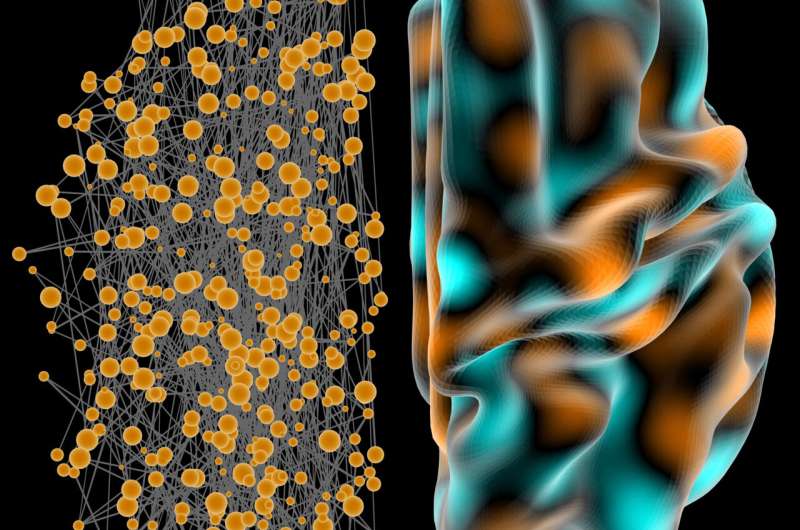This article has been reviewed according to Science X's editorial process and policies. Editors have highlighted the following attributes while ensuring the content's credibility:
fact-checked
trusted source
proofread
Fully understanding the human brain may not be a pipe dream

People have been studying the brain for thousands of years. But if you ask a neuroscientist how much we really know about the squishy blobs in our head, they'll probably tell you "not much."
That may change soon, thanks to a groundbreaking new theory about how brain shape influences brain activity.
Size matters
"When we talk about brain shape, we are talking about its actual geometry. Its length, size and, most importantly, its contours," says Dr. James Pang from Monash University.
Through their research, James and his team have theorized that each individual brain has unique physical features that can potentially affect its function.
James's idea builds upon the existing theory of connectivity, which states that signals travel from different parts of the brain like water traveling down a pipe.
"Neuroscientists have always thought signals traveled between isolated parts of your brain. And it has always been thought that we need to map all this complex connectivity between regions to better understand brain function itself," says James.
"That is still right. But my team's work used a different lens—looking at the brain as an intrinsic physical three-dimensional system."
Instead of information traveling like water down a pipe, James's research shows information traveling more like a wave. And the physical shape of a brain—its size, length and contours—may influence how that "wave" of information moves.
Brain wave
To develop their theory, James and his team worked with more than 10,000 activity maps created by functional magnetic resonance imaging (MRI), which was used to measure small changes in blood flow that occur with brain activity.
The researchers were specifically looking for "natural patterns of vibration or excitation in a system"—also known as eigenmodes. Just as the resonant frequencies of a violin string are determined by its length, density and tension, the eigenmodes of the brain are determined by its structural—physical, geometric and anatomical– properties.
"Eigenmodes help explain the patterns of activity we saw with functional MRI," says James.
By studying eigenmodes, James hopes they can better understand how brain geometry influences, well, us.
"We're interested in investigating how differences in brain geometry could be related to differences in how we behave," he says.
"We're also interested to look at how brain geometry develops as people grow from babies to adulthood and its implications to our cognitive function."
Mapping the mind
Despite our fascination with human brains, we've been unable to measure them closely.
That's not throwing shade on neuroscientists. The brain is just a very complex organ.
In James's opinion, Caenorhabditis elegans (aka the nematode worm) is "the most wonderful species."
"They only have approximately 300 neurons, and you can literally map every single possible connection."
"However, the C. elegans have a very primitive function compared to humans. The majority of their functioning is dedicated for moving, finding food and reproducing," says James.
Although 300 neurons sounds reasonable, there's around 45,000 unique connections that could be made between them.
The human brain has around 100 billion neurons. Mapping every single unique connection that could be made between them is currently not possible.
As a result, it's very difficult to get a handle on precisely what's going on inside our heads.
Despite the difficulties, measuring equipment has improved. In the last 10 years, MRI machines have improved their resolution from 3 millimeters to 0.5 millimeters.
However, that level of resolution isn't currently available for James's work, which looks at brain activity over time. Resolutions of 0.5 millimeters are suitable for anatomical scans of a brain, which are usually averaged over multiple sessions—sometimes up to 20—to reduce background noise.
With the new theory uncovered by James and his team, there's no telling what further mysteries will be revealed by the brain.
"It's quite an exciting field because we're learning so much new stuff on a basic science level and we're improving our understanding of the brain."
This article first appeared on Particle, a science news website based at Scitech, Perth, Australia. Read the original article.



















